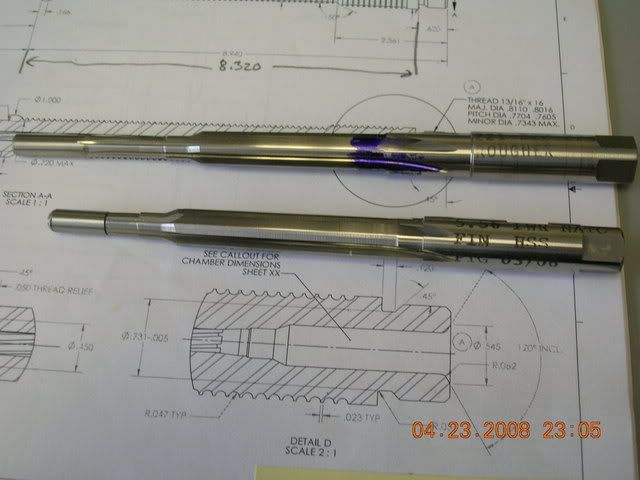Cheenist
Hot Rolled
- Joined
- Feb 23, 2004
- Location
- Alexandria Va. USA
I’ve got to run a boatload of gun barrels and the job is going to repeat. Now I’m not a gun manufacture and don’t know much about them. My customer likes my work and I have made a fair amount of barrels for him on my Haas SL-20 so I’m not a complete newbe. My customer does the chambering in house but now wants me to. The customers in house process is; first, the barrel is turned complete, second, he adds the barrel extension and torques it to 150foot pounds, third, he rough reams followed by the finish reamer…all on a manual lathe. At the rate I’m going to be making these barrels his process isn’t going to cut it. Are any of you guys making barrels? The “head space” is plus/minus .003. I would like to rough/finish ream the chamber in my CNC lathe THEN add/torque the barrel extension. Can I maintain the headspace with this process? I just can’t see a real barrel maker “finish reaming” chambers by hand!! His other barrel supplier makes and ships as many as 800 barrels a day. I’ll be doing around 300 every month. I was going to post this on the gunsmithing forum but most of those guys seem to be doing custom work.
Thanks,
Carl

Thanks,
Carl



